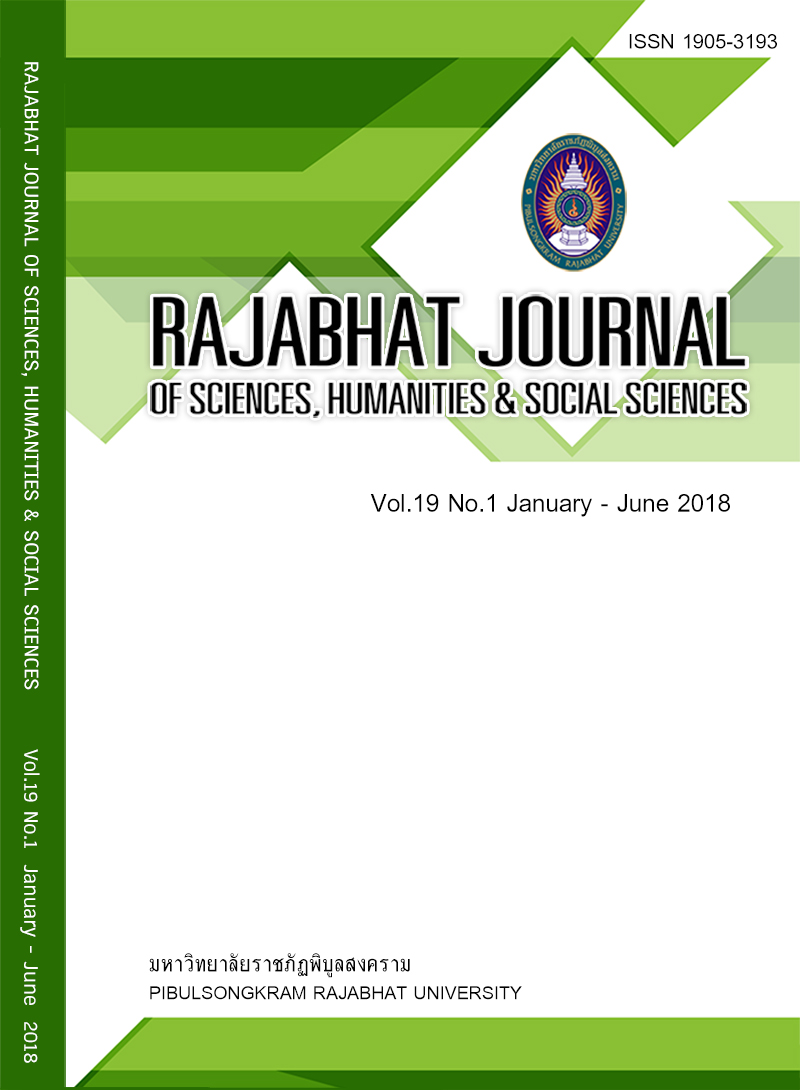THE RESULTS OF LEARNING MANAGEMENT THROUGH GUIDED DISCOVERY METHOD ON APPLICATION OF TRIGONOMETRY TO ENHANCE MATHEMATICAL THINKING FOR STUDENTS IN MATTAYOM 4
Keywords:
guided discovery learning, mathematical thinking, application of trigonometryAbstract
Mathematical thinking is one of the important skills that support students in Mathematics self-study, and improve problem solving skills for reasonableness. This research aimed to study the results of learning management through guided discovery method for Mattayom 4 students’ mathematical thinking in application of trigonometry. The research participants were 24 students in Princess Chulabhorn Science High School Phitsanulok. The instruments used in this classroom action research consisted of guided discovery lesson plans, worksheets, and mathematical thinking test. The data were analyzed using content analysis and triangulation. The results of this research showed students’ mathematical thinking developed after using guided discovery learning which consisted of three skills as follows: 1) Problem solving skill helped students to evaluate problems, make decisions, determine conditions of problem, identify the problem solving method, and correctly provide the answers 2) Reasonable skill, students can recognize knowledge to identify the problems and clearly provide reasonable answers 3) Mental representation skill, students can use texts, symbols or variables, and figures to understand problems, resolve problems, analyze and conclude answers.
References
Baroody AJ, Purpura DJ, Eiland MD. et al. The impact of highly and minimally guided discovery instruction on promoting the learning of reasoning strategies for basic add-1 and doubles combinations, Early Childhood Research Quarterly. 2015; 93-105.
Boontham C. The Development of Learning Devices Based Discovery Model to Improve Math Problem Solving Skills on One-variable Linear Equations for Students in Grade 7. Master of Education (Secondary Education), Faculty of Education, Srinakharinwirot University, 2006.
Kammanee T. Development of thought processes, Journal of Education Studies. 1991; 19-23.
Kemmis S, McTaggart R. The SAGE Handbook of Qualitative Research. California: Sage; 2000.
Krulik S, Weise IB. Teaching Secondary School Mathematics. Philadephia: W.B. Saunders Company; 1975.
Ministry of Education. Operational Guidelines for World-Class Standard School. Thailand: The Agricultural Co-operative Federation of Thailand Printing; 2010a.
Ministry of Education. Mathematical Process Skills. Thailand: 3-Q Media; 2010b.
Ministry of Education. Education Development Plan of the Ministry of Education B.E. 2555-2559 (A.D. 2012-2016), 2011.
Nabumrung R. Natural Ways of Mathematical Thinking on Multiplication and Division of Children Aged 7-10. Master of Education (Mathematics Education), Faculty of Education, Srinakharinwirot University, 2007.
National Institute of Educational Testing Service. Ordinary National Educational Test Report: Grade 12 students’ Academic Year 2015. 2016. https://www.onetresult.niets.or.th/AnnouncementWeb/PDF/SummaryONETM3_2558.pdf.
Shieh CJ, Yu L. A study on information technology integrated guided discovery instruction towards students' learning achievement and learning retention. Eurasia Journal of Mathematics, Science & Technology Education. 2016; 833-842.
The Institute for the Promotion of Teaching Science and Technology. PISA 2012 Full Report. Bangkok: Arun Printing; 2014.
The Institute for the Promotion of Teaching Science and Technology. Let’s know PISA. 2015. Available at: https://pisathailand.ipst.ac.th/. Accessed September 14, 2016.
Yuliani K, Saragih S. The Development of learning devices based guided discovery model to improve understanding concept and critical thinking mathematically ability of students at Islamic Junior High School of Medan, Journal of Education and Practice. 2015; 116-128.
Downloads
Published
How to Cite
Issue
Section
License
Each article is copyrighted © by its author(s) and is published under license from the author(s).










